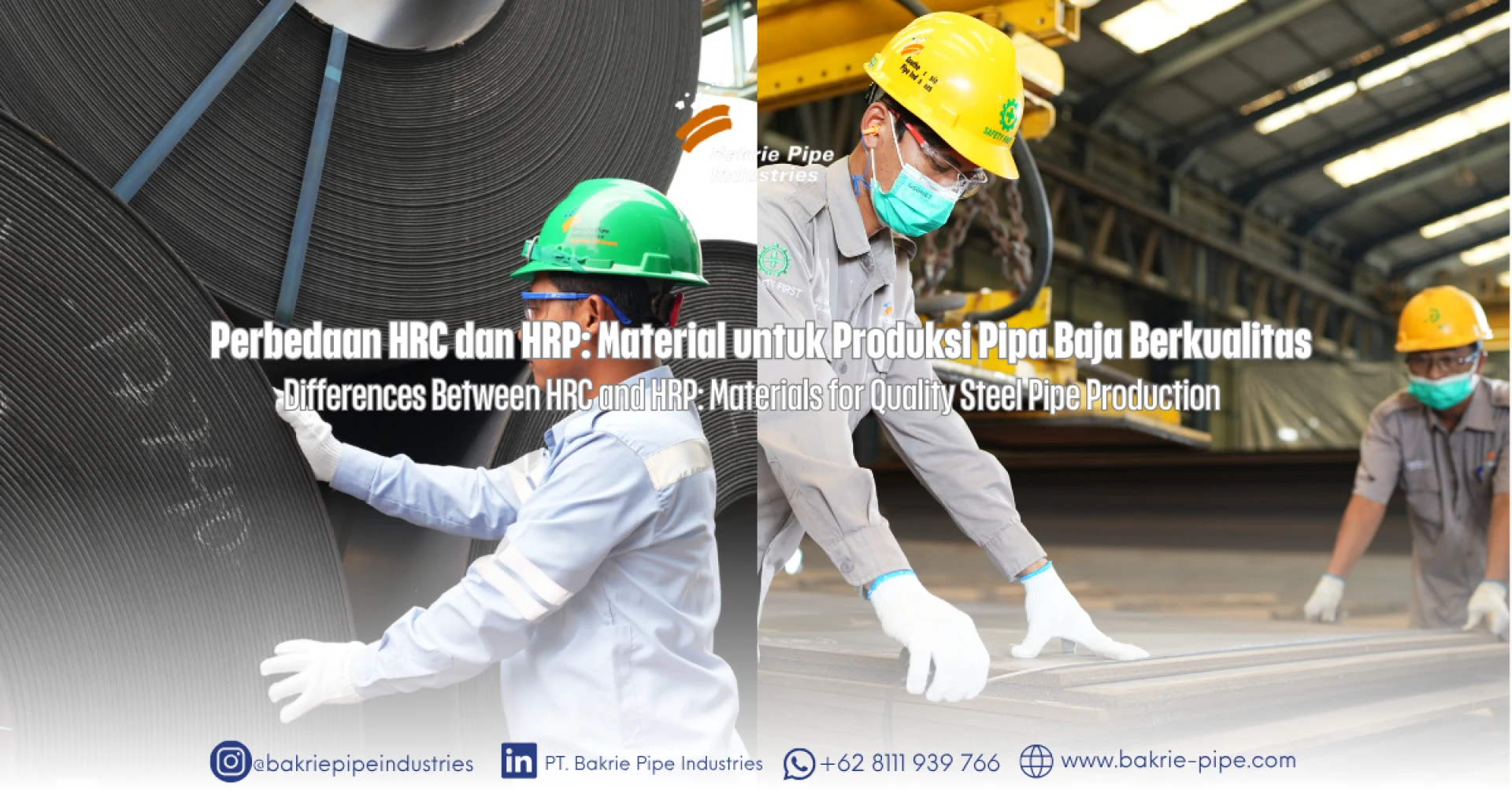Hello Pipe Enthusiasts!
Did you know that in the production of steel pipes at Bakrie Pipe Industries, two main materials are chosen? The two primary materials used are Hot Rolled Coil (HRC) and Hot Rolled Plate (HRP). Both are products of the hot rolling process, but they have different characteristics and applications.
What Are HRC and HRP?
- Hot Rolled Coil (HRC): steel sheets rolled into coil form. Its flexibility allows it to be used for various types of welded pipes, ranging from ERW/HFW to large-diameter HSAW.
- Hot Rolled Plate (HRP): steel sheets in flat plate form. Commonly used for LSAW (Longitudinal Submerged Arc Welded), especially when higher thickness and dimensional stability are required.
Key Differences Between HRC vs HRP
|
Aspect
|
Hot Rolled Coil (HRC)
|
Hot Rolled Plate (HRP)
|
|
Initial Form
|
Coil digulung
|
Plat dasar (flat plate)
|
|
Pipe Type
|
ERW/HFW, HSAW
|
LSAW
|
|
Flexibility
|
Tinggi, mudah dibentuk, bisa dilakukan proses slitting untuk kebutuhan produksi diameter yang lebih kecil
|
Stabil, presisi dimensi
|
|
Typical Thickness
|
± 1 – 26 mm
|
± 9,5 – 32 mm
|
|
Width
|
600 – 1,900 mm
|
600 – 1,220 mm
|
|
Length Produced
|
Fleksibel, bisa mencapai ribuan meter per coil (dipotong sesuai kebutuhan produksi)
|
Terbatas, umumnya 6 – 12 m per plat
|
|
Unit Weight
|
Maksimal ± 30 ton per coil
|
± 3 – 15 ton per plat (tergantung ketebalan & dimensi)
|
|
Pipe Type
|
ERW/HFW, HSAW (diameter kecil hingga besar)
|
LSAW (diameter besar, tekanan tinggi, proyek offshore
|
Understanding the Differences Between HRC and HRP Helps Us See That:
- Choosing material is not only about form (coil vs plate), but also about the steel specifications used.
- Each HRC and HRP can be produced with different grades, for example: SS400 / SS400B, ASTM A36, API 5L, and API 5CT with their various grades.
- Specifications determine the chemical composition such as carbon, manganese, phosphorus, sulfur, and other alloy elements. Differences in these levels affect: tensile strength, toughness, weldability, corrosion resistance, and more.
- Resulting mechanical properties (yield strength, elongation, hardness) will vary depending on the grade.
- Thus, the final steel pipe product (ERW/HFW, LSAW, HSAW) will have different performance depending on the initial material chosen.
- HRC is not limited to small–medium pipes, but also supports the production of large-diameter pipes (HSAW).
- HRP excels in stability and thickness, making it the primary choice for LSAW pipes in high-pressure projects.
Closing
With the utilization of HRC and HRP, Bakrie Pipe Industries ensures that every steel pipe produced meets the specific needs of each project, both in terms of efficiency and reliability.
